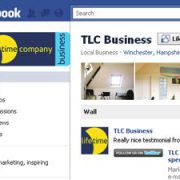What SMEs need to know for effective marketing in 2016 – seminar summary
Last week, TLC Business held our annual marketing seminar at The Mayflower Theatre in Southampton, but with a slight twist. We teamed up with Simon Harmer and his company Blown Away to deliver an inspirational session for businesses looking to get their marketing up and running.
This year, the focus was to ‘Get Your Marketing in Order for 2016’, and this blog will outline the main themes explored on the day, just in case you missed it!
Social media
With social media now firmly embedded into all our lives, it is clearly of big importance to us marketers. To help you succeed in your social media exploits, here are some top tips:
- Make sure your timing’s are on point. Many businesses fail to engage with their social media audience because they are posting at the wrong times. There are now a variety of scheduling platforms such as Buffer that suggests the best times to post updates for your business – so take advantage!
- Get your business on the right platforms. If you’re looking to build meaningful B2B connections and the ability to forge lasting business relationships, then LinkedIn consistently comes out on top as your best bet. In contrast, if you’re a B2C organisation and are looking to drive audience engagement and ultimately sales, then Facebook tops the list.
- Ensure that your posts have that ‘visual’ appeal. Posts that contain an image are 94% more likely to be shared than ones that don’t. Many marketers miss out on this simple trick that can increase social media engagement and reach dramatically!
- Posting the same content to all channels can become a bit tedious for your audience if they are present on each platform. Take advantage of the respective strengths of each social media platform and post content accordingly.
SEO
Search Engine Optimisation (SEO) is still perceived by many as a bit of a dark art. Despite constant algorithm updates, there are still opportunities to play the SEO game effectively and win.
Google is increasingly positioning itself as an ‘answers engine’. The advent of mobile has also put the cats amongst the pigeons (excuse the pun for those SEO geeks out there!) meaning there are even more opportunities to make your local business standout from the crowd.
Tips:
- Ensure that Google Analytics and Webmaster tools are installed and active on your website. Combined they will give you all the information you need (and more!) to get your website to be the best it can be. Google Webmaster tools will tell you what terms your site is being found for in Google, as well as identify any aspects of your site that are holding it back.
- Take full advantage of Google’s Keyword Planner to help inform the decision making process behind the keywords you choose to optimise your website pages for. And remember, keywords don’t have to be one word; they can effectively be phrases too.
- If you only do a few things SEO related on your website, make sure two of them are creating unique meta titles and descriptions optimised for the keyword-focus for each particular page.
- Get involved with Google Developer for page speed insights and how accessible on desktop or mobile your website is. Google gives marketers an insight into the loading speeds of their website, and will also give tips on how to increase load speed times. Alongside this, Google Developer provides a mobile-friendly test that will give marketers the tips and improvement suggestions they need to make their site better for mobile users.
PPC
96% of Google’s revenue comes from PPC ads, so clearly PPC is an important tool for them. We are sure you must be aware of the ads that populate Google’s search results pages! Statistics show that the top 3 ads on each search page receive 46% of traffic. PPC click-through rates are also shown to be 10 times higher than organic search clicks.
So what influences a good PPC ad? Each ad on every search page is ranked by Google. One’s ad rank is based on their cost-per-click and quality score. Your ads quality score has the ability to make or break your campaigns success. The quality score is made up of your ads click through rate, alongside your ads relevance to the keyword and your landing page’s relevance to the targeted keyword. The more relevant the better!
Tips:
- Make your ad text as relevant as possible to the keyword and ensure your landing page is targeted at that keyword too! Try getting your landing page’s URL to include the keyword in too.
- Get retargeting. Retargeting has given us marketers another tool to boost our marketing with. With retargeted visitors 70% more likely to convert, it doesn’t come as a surprise that retargeting is another highly effective marketing technique. To put it in its most simple form, retargeting is the practice of serving display ads to people who have previously engaged with your brand. It is vital for marketers looking to increase marketing results in 2016, helping to drive sales and increase brand awareness. The numbers are compelling. Statistics have shown that retargeted ads receive a 0.70% click-through rate, compared to just 0.07% for regular display ads. Following this, brand search exposure can increase by over 1000%, just from retargeting. With this in mind, retargeting is a must for 2016!
E-marketing
With 2.6 billion email users worldwide, it doesn’t come as a surprise that e-marketing is still a massive hit with marketers. It is reported that for every $1 spent on email marketing, the average return is $44.25, providing yet more reason for you to start thinking about promotion through email if you haven’t done so already.
The popularity of email marketing is continuing to grow, and more email scheduling platforms are being introduced. Platforms such as Campaign Monitor, ReplyApp and MailChimp are great tools for creating, scheduling and managing marketing email campaigns.
Tips:
- Use email marketing platforms such as Campaign Monitor to split test each email campaign. This will allow you to identify what content and approach is most effective at meeting your objectives and enables you to continually refine and improve on what works best.
- Personalisation is key! Send emails that are personalised to the recipient. Include their name in the subject line, reference topics and include content that they have expressed in interest in. This will not only help build better relationships between your business and consumer, but it will be demonstrable through better engagement and open rates.
- Make the email content mobile-friendly, that way the emails can be accessed by a wider audience.
Content Marketing
Creating and sharing content that engages your audience (Content Marketing in a nutshell!) is now a vital component of the marketing mix for marketers. New and fresh content should be published regularly. What regularly looks like depends on your audience. For B2B marketers, 26% post news and updates multiple times a week.
92% of businesses that use social media, use it as a tool to present content. Email is another vital content distribution tool. LinkedIn, Twitter and YouTube make up the top 3 for effectiveness when sharing content, but all have different advantages and disadvantages; therefore it’s important to make sure your content is tailored to your different channels.
Top Tools
With 2016 approaching, what are the top tools for more effective marketing? We have identified Datananas as a potentially effective tool for those looking to build their professional database, with its ability to export LinkedIn users and their contact information from LinkedIn without the need to be connected to them.
Other platforms like Buffer have also popped up on the radar, with its unique imaging software – Pablo! Brands are now able to upload an image of their choice and add text to it, making each social media post unique and eye-catching for their audience.
SumoMe is another top marketing tool for 2016, incorporating a series of apps all designed to get your website and content working. The toolbox includes on page analytics, free traffic for your site, image sharer and a smart bar that will increase your number of email subscribers – amazing!
What else is there to add to the marketing tool list? Google’s Webmaster Tools crops up again! As mentioned before, Google’s Webmaster Tools is a vitally important tool for anyone with a website. With the ability to understand your site’s organic search performance, as well as providing tips and tricks on how to get more traffic, the tool is a must.
One New Year’s resolution for you – download these marketing tools!
So, what matters for SMEs?
We think the top 5 themes that SMEs should consider in 2016 are:
- Content is king – still!
- Analytics
- Personalisation
- Online ads
- Video
We hope you find this useful and would like to thank everyone who attended. We look forward to seeing you again soon!











Leave a Reply
Want to join the discussion?Feel free to contribute!